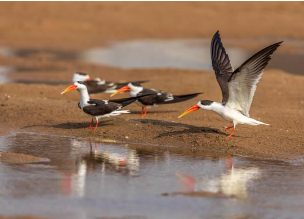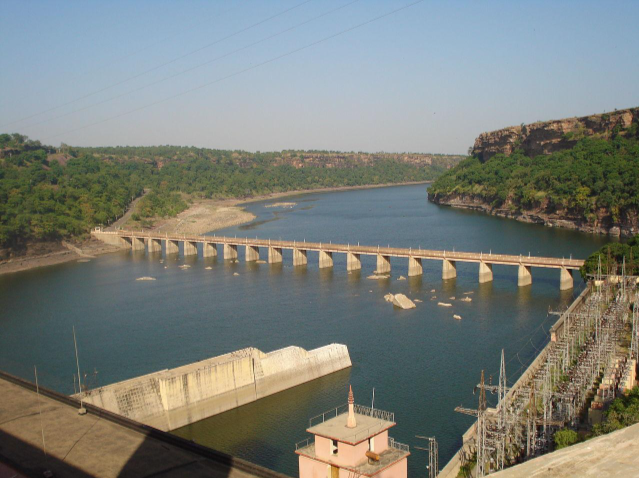Introduction
The Chambal River is one of India’s cleanest rivers and home to spectacular species such as gharials, muggers, and dolphins. The Chambal River Basin was once a haven for dacoits, but they have since surrendered and are living a regular life, leaving the valley tranquil.
Chambal River
The Chambal River, a tributary of the Yamuna River in Central and Northern India, is part of the Gangetic drainage system. The river travels north-northeast through Madhya Pradesh and then south-southeast through Rajasthan, forming the Rajasthan-Madhya Pradesh border, before turning southeast to join the Yamuna in Uttar Pradesh.
It is a mythical river that is mentioned in ancient texts. On the south slope of the Vindhya Range in Madhya Pradesh, the perennial chambal grows at Janapav, south of Mhow Town, near Manpur, Indore. The Chambal and its tributaries drain the Malwa region of northern Madhya Pradesh, whereas the Banas, which arises in the Aravalli Range and drains southeastern Rajasthan, is a tributary of the Chambal. It terminates at Pachnada near Bhareh in Uttar Pradesh, at the border of Bhind and Etawah districts, at the confluence of five rivers: the Chambal, Kwari, Yamuna, Sind, and Pahuj.
Flora
Over a hundred different flowering plants can be found near the Chambal River. Axlewood, Alkaline Babul tree, Flame of the Forest, Birch, Peanut Grass, Deck, Tendu tree, Indian Ash tree, Kaim, Indian Tragacanth, Alma tree, Fish Berry, Climbing Bridelia, Velvet Leaf, Jumby-bean, Salai Guggal, and others are just a few examples.
Fauna
The Chambal River is pollution-free and it is home to a diverse range of riverine fauna, including two species of crocodilians—the mugger and gharial—eight different species of freshwater turtles, smooth–coated otters, gangetic river dolphins, skimmers, black-bellied terns, sarus cranes, and black-necked storks, among others.
Main Tributaries
The Banas and Mej rivers on the left, and the Parbati, Kali Sindh, and Shipra rivers on the right, are the main tributaries of the Chambal.
Economic Significance
The Chambal River is extremely important to India economically since it contains four dams. The Gandhi Sagar, the oldest of these, is located at the Kanjarda Plateau’s entrance. This dam has five generators, each of which generates 23 megawatts of electricity. Another dam, in Kota, was built as part of India’s first 5-year plan in 1952. The Jawahar Sagar Dam was the third dam erected in Chambal, while the Rana Pratap Sagar Dam is the last dam.
Mythology
Chambal has an intriguing origin story. The river is commonly referred to as the “cursed river” because legend has it that it was formed by the blood of thousands of animals murdered by King Rantideva. According to legend, the river was once known as the Charmawati River. There’s also the Mahabharatta connection to consider.
According to legend, the dice game between the Kauravas and Pandavas in the Mahabharata was played on the banks of this river, which is referred to in the epic as Charmawati. Draupadi blamed the river that witnessed the horrific tragedy when she was humiliated as a result. She had cursed that anyone who drank water from the river would be consumed by an insatiable need for vengeance. For a long time, the legend of Draupadi’s curse on the river kept people away from it.
Major Attractions
The Jawahar Sagar Wildlife Sanctuary and the National Chambal Sanctuary are two wildlife sanctuaries in Rajasthan. It is a popular destination for eco-tourists, and the site is ideal for bird viewing or crocodile watching. The Chambal River passes through some beautiful cities to visit, such as Kota and Rajasthan, but it is primarily for eco-tourists.
Trekking into the ravines is also an unusual experience. In today’s world, one can experience the excitement of the badlands while simultaneously enjoying the calm and tranquillity that the region has to offer.









